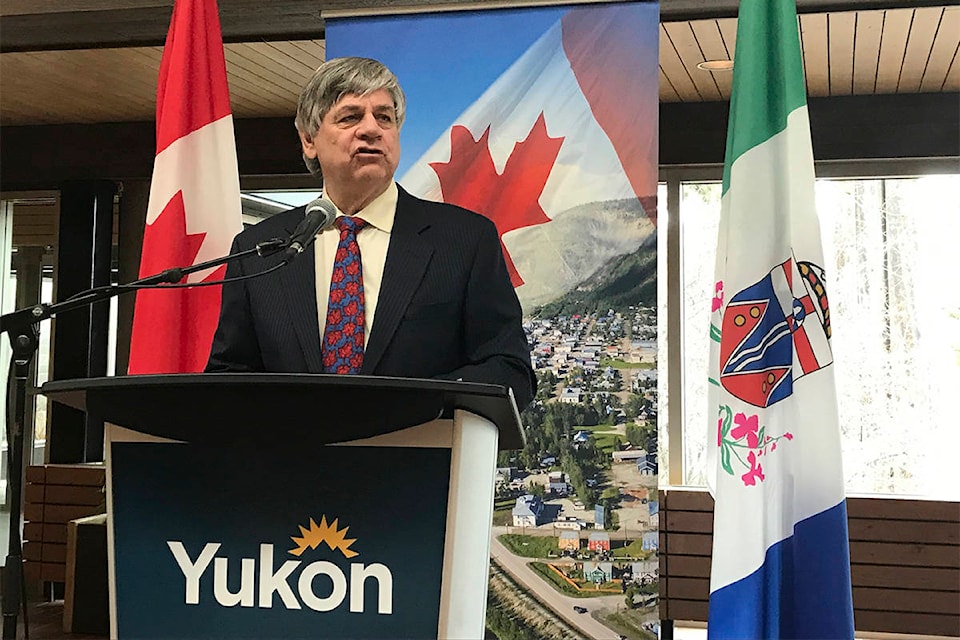Up to 400 homes are to be outfitted with smart devices, turning them into “virtual power plants,” as Minister Ranj Pillai put it.
A pilot project, backed by the Yukon and federal governments, ATCO Electric Yukon and Yukon Energy Corporation (YEC), called the residential demand response program, was announced last week.
In an effort to curb greenhouse gases and save electricity, the idea is to adjust power at peak hours, gauged around 8 a.m. and 5 p.m., via internet-controlled devices.
“Through these smart devices, Yukon Energy’s system control centre will be able to shift the energy demand in these homes to off-peak hours, which will reduce energy costs, minimize rate increases and cut pollution, truly a win-win scenario,” said MP Larry Bagnell on April 12, the day the two-year, volunteer-based project was announced by him, Pillai and YEC CEO Andrew Hall.
It’s worth $1.3 million, with the federal government chipping in $650,000 and the Yukon government contributing $250,000. ATCO and Yukon Energy cover the rest — $300,000 and $100,000, respectfully.
“When these residents volunteer for the pilot, they’ll be provided with a control unit, which will be connected to the baseboard heater and, or their hot water tank, and this will be provided free-of-charge,” Hall said.
He said units could be installed this fall.
“As we move into this winter and the winter of 2020-21, we’ll be looking to run what’s called a couple of demand response events. When temperatures are lowest, we’ll look to take control of those hot water tanks or baseboard heaters and shift that peak demand for power in that home.”
Residents must be connected to the Yukon grid, he added.
When electricity is adjusted, changes will be negligible, Hall said.
“Part of the objective of the study is to see what the customer experience with that is. Do you detect any difference in the temperature of your shower, or the temperature of your home? We’re only talking a couple of degrees here. We’re hoping there’s no perceptible difference.”
Residents will be alerted in advance and there will be an opt-out function, he said.
Asked by reporters how much energy could be saved, Hall said, “With 400 homes, let’s say, it’ll be between 400 kilowatts and maybe one megawatt. That’s an instantaneous amount.
“Our load in a typical winter day is around 19 megawatts. That’s really the benefit for us, is shaving that peak demand.”
On April 15, Pillai brought up the project in a ministerial statement.
In it, he said that, “If fully subscribed to, we anticipate a potential reduction of 4,600 to 7,200 kilograms of greenhouse gas emissions over the two-year pilot program.”
He added that if it’s successful, it could be rolled out across the territory as a full program.
“The lessons learned from the project can also be beneficial as more renewable energy resources, such as wind and solar, are introduced to the system.”
Contact Julien Gignac at julien.gignac@yukon-news.com
